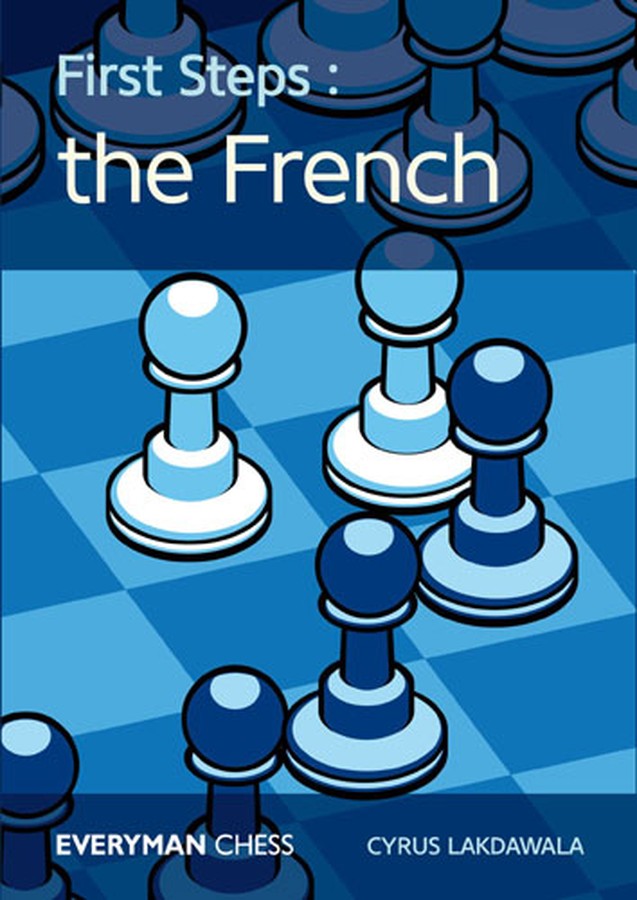| Nivå | B-C |
| Utgivelsesdato | August 2016 |
| Forfatter | |
| Pris | 235 NOK |
First Steps: the French
Første bok i en ny serie som gir leseren en grunnleggende innføring med gode eksempler for å kunne starte å spille en åpning. Alle de viktigste systemene i Fransk blir vist gjennom minst ett pedagogisk kommentert parti. En bok mest for spillere cirka 1100 - 2000.
Forlagets omtale:
The French Defence is a highly reliable response to 1 e4 which is popular at all levels. With the first two moves, Black creates a solid foundation in the centre and seeks to put pressure on White’s position in the early middlegame.
In this book, International Master Cyrus Lakdawala explains the basic ideas in the French and examines the important variations.
The key ideas are emphasized with notes, tips and warnings and the reader’s understanding is tested with frequent exercises. This book tells you everything you need to know in order to take your first steps with the French Defence.
Cyrus Lakdawala is an International Master, a former National Open and American Open Champion, and a six-time State Champion. He has been teaching chess for over 30 years, and coaches some of the top junior players in the US.
First Steps is a new opening series and is ideal for improving players who want simple and straightforward explanations. First Steps emphasizes:
• the basic principles • the basic strategies • the key tricks and traps
First Steps books are based around carefully selected instructive games which demonstrate exactly what both sides are trying to achieve. There is enough theory to enable the improving player to get to grips with the opening without feeling overwhelmed. If you want to take up a new opening, First Steps is the ideal place to start.
Fra forfatterens innledning:
What makes a French player?
The French is an opening so vast in scale, that it almost defies classification. If you enter closed games with the rapt contentment of a positional player, and if you feel agoraphobic in 1...e5 or 1...c5 situations, then you may qualify as a natural French player.
Fashionable openings go in and out of favour like ageing rock stars, who were huge 40 years ago, but now have trouble selling tickets at the local swap meet. The French isn’t like this, and from my perspective, is as much fun to play at age 55 as it was to play at age 8. Now a lack of space is an issue baked into the opening. So if you love open games, the French from Black’s side is probably the wrong fit for your needs. When we misplay a French we know it, since it becomes hard for our pieces to breathe, and the feeling is similar to being buried while still alive in a coffin, in Uma Thurman fashion in Kill Bill (I forgot if it’s volume one or two!).
The entry of beginning level club players can feel like Gulliver, who gets tied down in Lilliputian theoretical details. My job in this book is to try and demystify an otherwise intimidating opening and make clear the various positions we may face. Even if you don’t reach the exact position we cover in the book, you won’t be adrift, since you will be familiar with simulacrum positions, which always come with a known antecedent, where at least you move in the right direction.
In most of the positions, the players’ views tend to be irreconcilable, like space versus counterattack potential, or bishop-pair and dark squares versus superior structure. Our choices tend to exude a quality of absolutism, with no space for a fuzzy grey middle ground.
| Innbundet? | Nei |
| Type | Bok |
| Språk | Engelsk |
| Antall sider | 239 |

